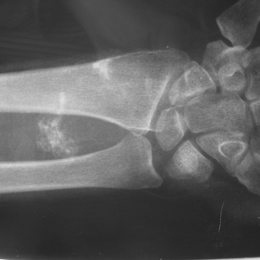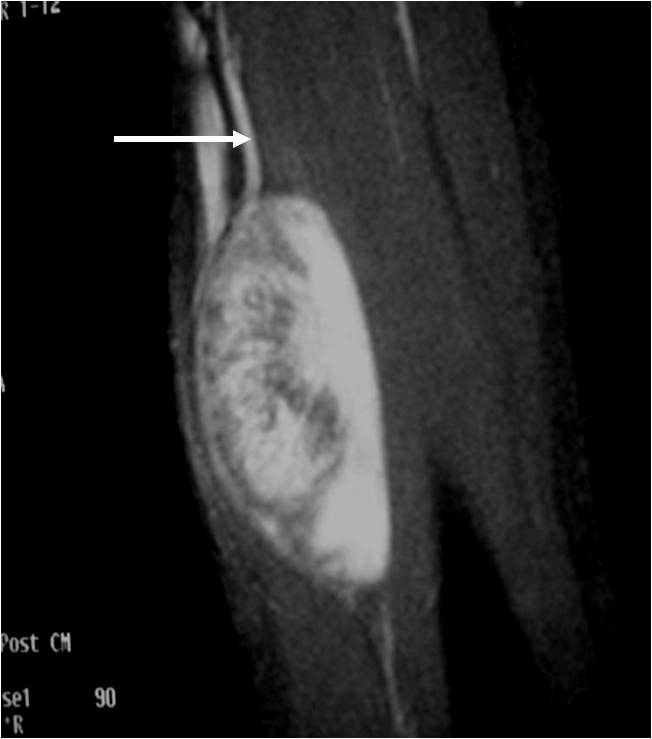What is a Synovial Sarcoma?
Who is usually affected?
- • Affects patients ages 15-35 years old.
- • Seen equally in males and females.
Causes
- • Result of a chromosomal translocation SYT-SSX t(x;18) (p11;q11) which is seen in 90% of cases.
Common Bones Involved
- • It arises from tendons, bursae or joints.
- • Most common soft tissue sarcoma of the foot and ankle.
Signs and Symptoms
- • Signs and symptoms include a slow-growing, palpable, often painful, mass.
Biological Behavior
- • May metastasize to nearby lymph nodes.
Diagnosis
- • The work-up often consists of a physical examination, X-rays, CT scans, MRI, and sometimes bone scans are required. CT scans can be used to check for subtle mineralization that may help with the diagnosis
- • CT of the chest is necessary to check for pulmonary metastases. The lungs and other bones are the to most common sites for the tumor to spread.
- • The diagnosis is often confirmed with a biopsy, which means taking a sample of tumor and having it analyzed under a microscope by a pathologist.
Risk to your limbs
Synovial Sarcomas are cancerous aggressive tumors that, if left unchecked, will grow and destroy your normal bone. As the tumor slowly grows, the bone is weakened and you are at an increased risk of breaking the bone due to the tumor (called a pathological fracture). They may also spread to your lungs or other bones.
Radiographic imaging is used to help form a diagnosis. These include X-Ray, MRI, CT and Bone Scans.
An example of an Synovial Sarcoma MRI is shown.

Treatment of Synovial Sarcoma
Surgery
Treatment is surgical removal. High grade tumors require radical resection or wide excision. Radical resection removes the entire tumor, along with healthy tissue around it, called a margin. The removal of additional, surrounding margins ensures that the tumor is completely removed and decreases the chances of the tumor coming back.
Chemotherapy
Chemotherapy is used most often if the cancer has spread (metastatic disease). About 50% of cases of Synovial Sarcoma develop metastases. Chemotherapy is a systemic treatment option for cancer, meaning the chemotherapy drugs can kill the cancerous cells that have metastasized, or spread throughout. Chemotherapy is used to treat cancer, control/prevent cancer from spreading, and ease the symptoms related to the cancer. There are various drugs used in chemotherapy, so the combinations of drugs administered and the number of cycles may differ between each person and tumor.
Radiation
Radiation may improve local control. Radiation is a treatment option for some cancers. Radiation therapy is a localized treatment that utilizes high-energy particles or waves to kill cancerous cells. Because radiation therapy is a localized treatment, it only affects the area in which it is set to target and therefore eliminates the risks of damaging healthy cells throughout the body. Not only is it used to treat cancer, but it can also decrease the chances of the cancer from recurring. Lastly, radiation may be used in conjunction with other treatments, such as surgery or chemotherapy, to treat cancers.






